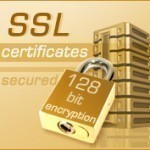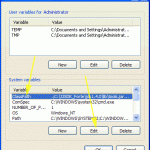Dish 300 was the first satellite dish receiver provided by the direct broadcast satellite television company, Dish Network, and was originally known as the “Dish Network Dish”. Dish 300 had a single LNB, or Low Noise Block, that was capable of receiving signals from the 119°W orbital location owned by EchoStar as well as the 148°W or 61.5°W orbital locations for Latin American broadcasting, but not the 61.5°W, 110°W, or 129°W orbital locations. Because of the inability of Dish 300 to connect to these other satellites, it was eventually discontinued Read More
Instant Messaging
Instant messaging is a technology which enables you to send and receive messages almost instantaneously across a internet connection. Instant messaging is much faster than e-mail. Instant messaging offers the promise of instant gratification which is so desirable in today's world. Instant messaging is rapidly replacing the telephone as the primary method of "reaching out and touching someone." How Instant Messaging Works Most instant messaging involves a server and a number of clients. The instant messaging servers are typically run my major corporations, such as AOL, Yahoo, Microsoft, ICQ, and Read More
How to Change a Password

There are various scenarios in which a password needs to be used. A feature that goes hand-in-hand with password use is the ability to change or reset it. The need to change a password arises predominantly for two reasons: 1) as a means of maintaining high security by regularly changing the password so that unauthorized persons do not gain access to the password protected service or product in question and 2) as a means for the authorized user to regain access to it when the password is either forgotten or Read More
How to Remove WGA
To remove Windows Genuine Advantage, particularly the validation tool from your Windows-based machine, you need to: Go to your Windows folder, usually at C:Windows. Search for the folder named 'Downloaded Program Files'. Note that Windows Genuine Advantage, which is found embedded on Microsoft Windows OS products, consists of two distinct elements, namely the Validation Tool and the Notification tool. If you are running a Microsoft Windows Server 2003-operated system, locate the ProductIDGatherer.WindowsGatherer file. Right click on it and choose 'Remove'. If you are running a Microsoft Windows XP-based machine, choose Read More
How to Connect a TV to a PC
S-Video Separate Video (S-Video) is an analog video transmission technology that sends video signals via cable, as two detached signals known as lumen and chroma. Lumen indicates the brightness and chroma the color aspects of the video transmission. The S-Video technology is ideal for television sets as they are built to display separate lumen and chroma signals. It is one of the most commonly used video transmission technologies today. Electronic devices such as TVs, DVD players, digital TV receivers, game consoles, and graphic cards utilize S-Video. The most readily available Read More
SSL Applications

Using SSL to Encrypt LDAP and Global Catalog Queries While Secure Sockets Layer (SSL) certificates are mainly installed on IIS machines to encrypt traffic between a Web server and client, you can also use SSL certificates to secure the Lightweight Directory Access Protocol (LDAP) protocol. LDAP is used in Active Directory environments by applications that need to query domain controllers for information stored in Active Directory. Because LDAP is also utilized to query for sensitive or Active Directory information such as user names, and network service locations; it is easy Read More
CLASSPATH

CLASSPATH is an environment variable which tells the Java compiler and the JVM where to look for Java class files. In Java 1.2 and later, the CLASSPATH variable is less critical because Java knows how to find the default classes and because Java loads classes from the current directory by default. If you do not want to use an environment variable, you can use the -classpath argument to the Java compiler or the JVM as such: javac -classpath . JavaProg To add a jar file to your CLASSPATH, include the Read More
MMX (Multimedia Extensions)
MMX stands for Multimedia Extensions. MMX is a technology designed to accelerate multimedia and communications applications. This acceleration and simplification is done through a set of multimedia instructions which are built into microprocessors to enable them to handle common multimedia operations like DSP, or Digital Signal Processing. MMX works by taking certain operations, such as moving a pixel of graphics, which are usually processed as 8-bit integers, and instead packing a number of these pixels into one larger data unit. MMX then performs the requested operation on the larger data Read More
Noise Canceling Headphones
Noise-canceling headphones are headsets that have the ability not just to block out noise but to cancel it using the properties of sound waves. Sound waves have compression and rarefaction characteristics similar to the crests and troughs of a transverse wave. They also have amplitude and frequency characteristics. These characteristics of sound waves are used in noise cancellation by noise-canceling headphones. The first noise-canceling headphones were manufactured by Bose and quickly found a market especially among musicians. Their popularity came from their ability to filter out and eliminate the white Read More
IMAP (Internet Message Access Protocol)
If you are a perpetual user of the Internet and its services such as email, then the chances are high that you've come across the term, IMAP or Internet Message Access Protocol. IMAP, in layman's term, is a technique of retrieving e-mails from a mail server using a suitable e-mail client. Normally, you don't see people using this method on a day to day level and that's because of another protocol, POP3 or Post Office Protocol, which is quite popular among the users. As of today, almost every e-mail client Read More


Share on: